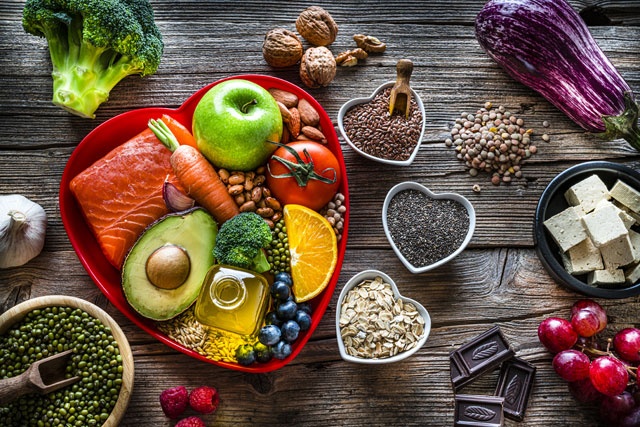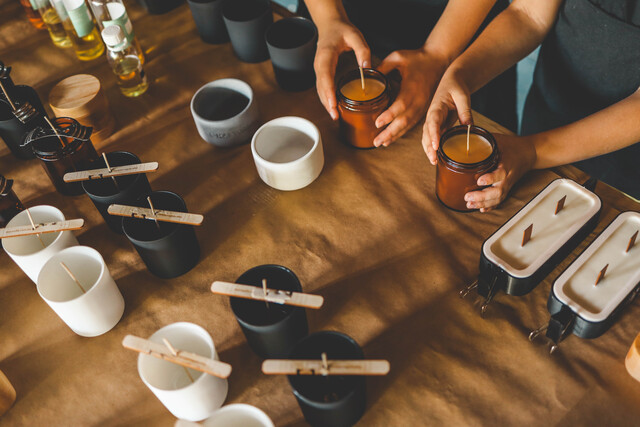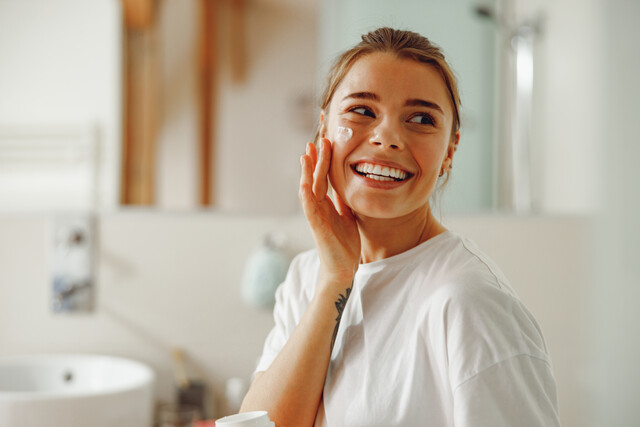Article Overview
In this article, you will learn the amazing range of benefits of natural skin care ingredients, as well as the most common natural ingredients you will see in many commercial products.
We will also explore natural oils and butters that are beneficial to the skin, as well as common plants and fruits that can increase your skin's health. Finally, we'll touch on the importance of natural exfoliates and just how easy they are to make and use.
Section 1. Benefits of Natural Ingredients
There are so many benefits to using natural products for your skin. Not only are they better for the environment and reduce health problems, natural ingredients can deliver amazing results. Below are just a few:
-
Natural oils and butters sink deep into the skin and moisturize, instead of leaving a deceptive, but non-nourishing coating like most synthetic products.
-
Ingredients from the earth are much less likely to irritate your skin, although people with specific allergies should always use caution.
-
Natural oils, such as sweet almond oil are very similar to the natural oil secreted by your skin.
-
Fruit and other natural exfoliants gently remove dead skin, without the painful burning and peeling associated with chemical products.
-
Many plant based formulations are healing and have the ability to reduce the appearance of burns, wounds, and stretch marks.
-
Natural products can help you to gently reduce acne and blemishes.
Coconut oil is a very versatile oil and can be used for cooking, eaten by the spoonful for health, and used as a natural moisturizer. Coconut oil is a staple in Polynesian cultures and is revered for its beauty and anti-aging benefits.
Avocado is a wonder fruit for the skin. Not only does avocado impart moisture and have anti-aging benefits, it also helps to reduce the appearance of sunburn and age spots. An avocado mashed up with honey makes an excellent moisturizing face mask.
Section 4. Natural Exfoliates
Exfoliation is a very important part of a healthy skin care routine. Your skin cells regenerate roughly every 29 days. If the dead skin is not removed, this leads to build up and a dull, ashen complexion.
There are many natural substances that provide thorough, yet gentle exfoliation. You can mix these with honey, aloe, glycerin, or natural oils to make a decadent and invigorating exfoliating scrub. Some of the best natural exfoliates are:
-
White Sugar
-
Brown Sugar
-
Ground Coffee
-
Salt
These items not only gently remove dead skin, they have other benefits as well. Coffee has antioxidant properties and also helps to tighten the skin and reduces the appearance of cellulite. Sugar adds moisture to the skin as it exfoliates, and helps to reduce the appearance of hyper-pigmentation. Also, salt is detoxifying and draws out impurities from the skin. Using natural exfoliates is a gentle and healing addition to any skin care routine.
Food for Thought
Were you aware of any of the benefits of the natural ingredients listed? Which of the items have you tried before? What might you like to add to your routine?
Conclusion
In this section, you will learn which natural ingredients and techniques are effective in healing common skin issues, including burns, eczema, and stretch marks.
Section 1. The Nature of Skin
Your skin is resilient, but at the same time very fragile. As your largest organ, your skin can sustain a lot of wear and tear over time, but can easily repair itself if well supported.
For centuries, people around the world have used herbs, plants, and oils to heal any number of skin ailments. Indigenous cultures such as the Native Americans, East Indians, and Africans are especially reverent of the power nature possesses to beautify and heal. To be effective in healing skin problems, a working knowledge of the anatomy of skin is beneficial.
-
The Epidermis � The topmost, visible layer of skin that is most affected by sun exposure, cuts, and burns. This layer is the easiest to damage and the effects are clearly visible. The epidermis is actually made up of five layers of skin, and the top two are slick dead skin cells that needs to be exfoliated regularly.
-
The Dermis- The second layer of skin contains the skin's stores of collagen and elastin -- which give it that plump and firm appearance. Most commercial chemical skin care products do not penetrate to this level, so they are minimally effective. The dermis also houses the skin's oil and sweat glands, as well as blood vessels.
-
The Hypodermis is the lowest and supporting layer of skin that is largely made up of fat and connective tissue. Large blood vessels course through this layer and provide oxygen and nutrients.
Each layer of skin has its specific functions and requirements. If you are looking to nourish your skin and provide deep penetrating moisture, natural products are much better than synthetic chemical concoctions. In fact, your skin has to work harder to filter out the harsh chemicals and often cannot get rid of them all. This often leads to toxicity and allergic skin rashes.
Section 2. Healing Cuts, Burns, and Stings
The body has the miraculous ability to heal and nature contains many elements that aid in the healing process. Natural skin care oils and plant essences can speed healing time, reduce scar tissue and marks and reduce itch. Below are some easy and natural ways to aid healing.
Emu oil, which is a natural oil derived from the fat of the emu bird, has been used by Aboriginal Australians for centuries. It has many properties, among them being that it is very healing and able to penetrate all three layers of the skin. It has anti-bacterial and anti-microbial properties, so it is beneficial for keeping wounds and burns from getting infected as they heal. In fact, surgeons have recently experimented with using emu oil on scars post-surgery and observed faster healing and a much lighter scar than usual.
Aloe vera is one of the best salves to place on a burn. Many people keep a plant growing in their kitchen and break off a leaf as needed to sooth burns while cooking. When using aloe vera, the prickly leaf is split open and the cool soothing gel applied to the burn. It absorbs the heat and imparts healing and moisture to the affected area.
Essential oils(concentrated plant oils) such as tea tree oil, lavender, and chamomile reduce the itching from bug bites. Also, clove, eucalyptus, and patchouli oils can be an effective insect repellent. Essential oils are very potent, so always dilute in a carrier oil (sweet almond, apricot kernel, etc.) before applying to skin.
Natural clay, such as Rhassoul, Bentonite, or French clay can be applied as a poultice or pack to help heal cuts, burns, and stings. As it dries, the clay draws toxins from the skin. Clay packs are also beneficial as facials to draw out excess oil and blackheads.
Section 3. Healing Eczema, Psoriasis, and Other Skin Irritations
Skin conditions such as eczema and psoriasis are often caused by an allergy or imbalance inside of the body. They can also be caused by a strong reaction to harsh shampoo, artificial perfumes, and many other synthetic and environmental factors. These issues should be investigated and treated; however in the meantime, there are natural ingredients that can be applied to the skin to help sooth the itch and heal the often dry and cracked skin.
Emu oil is once again one of the best treatments for eczema and psoriasis. This is because it is anti-inflammatory and helps to sooth cracked and oozing skin. In addition, it helps the area stay clean and allows optimal healing due to its antibacterial properties. The fact that Emu oil can penetrate so deeply also provides relief for dry parched skin.
Chamomile cream is very effective for reducing the severity of the redness and itchy skin associated with eczema. In a recent study, researchers found that it outperformed normally-prescribed hydrocortisone cream.
Virgin Coconut oil can be rubbed on the skin and also eaten to help heal eczema. Coconut oil contains essential fatty acids, which help to heal skin and reduce inflammation. Coconut oil softens the skin and reduces cracks and blisters.
Castor oil and shea butter are both thick oils that can coat and sooth painfully itchy patches of eczema, especially for children. These oils can be a godsend for severe eczema that becomes so inflamed that it can cause you to draw blood from scratching so much.
Section 4. Fading Dark Spots and Stretch Marks
The number of products on the market claiming to reduce dark marks, whiten skin, and reduce stretch marks is astronomical. Unfortunately, most of the ingredients that are used in these products can be irritating to the skin and some of them are extremely dangerous. Many of these ingredients have been banned for use in the United States, but products containing harmful fading agents continue to make their way into the country.
Two of the more harmful ingredients include:
Hydroquinone- an extremely toxic ingredient often found in fade creams and facial moisturizers. This ingredient has been shown to cause cancer, interfere with developmental and reproductive health, as well as cause allergies and impair the immune system.
Some products with the highest levels of Hydroquinone include "Palmer's Skin Success Fade Milk Lotion" and the entire Skin Success product line. Also, "Esoterica" fade products, "Ambi" fade creams and "Physician's Complex" 6 percent bleaching cream.
Mercury- is an ingredient that has been banned for use in skin ingredients in most Western countries because it is extremely toxic. Mercury blocks the body's ability to produce melanin (skin pigment), so it can be effective in reducing dark marks, but at a great cost.
Safe Natural Alternatives to Fade Creams
Some natural alternatives to fade creams include:
-
Lemon juice
-
Apple cider vinegar
-
Orange juice and yogurt facial mask
-
Honey, milk and lemon facial pack
-
Shea Butter
-
Emu Oil
Food for Thought
Is there anyone in your family or circle of friends who uses natural plants and oils to treat their skin? Have you or any of your friends experimented with lightening creams? What were your results? What are your thoughts now that you are aware of the toxic chemicals they contain?
Conclusion

























